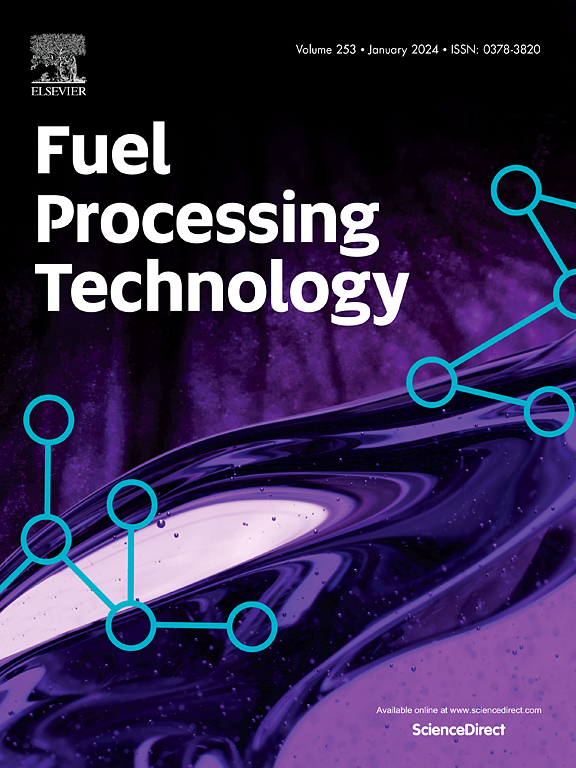水热处理和活化气氛对枣坑活性炭孔隙度发育的影响
IF 7.7
2区 工程技术
Q1 CHEMISTRY, APPLIED
引用次数: 0
摘要
本研究根据绿色化学原理,采用蒸汽和CO2作为活化剂,探索不使用化学添加剂的枣坑活性炭生产工艺。介绍了一种新的活化方法,将两种药剂结合起来,提高孔隙度。本研究系统考察了CO₂与蒸汽活化在微孔形成上的差异,以及水热预处理对最终材料性能的影响。合成了具有高BET表面积和不同孔径分布的活性炭,主要包括微孔、微孔和大量介孔材料,以及由微孔、中孔和大孔组成的孔网络样品。结果表明,水热预处理提高了生物炭的产率,提高了约25%。结果表明,炭化温度、炭化条件和活化剂对炭化过程的影响较大。值得注意的是,研究结果表明水热预处理以不同的方式影响生物炭的反应性。尽管在处理过的和未处理过的碳中观察到相似的表面官能团组成,但水热处理的样品出乎意料地表现出更大的疏水性。此外,与单独使用相比,CO₂和蒸汽剂的联合使用导致更高的燃烧,突出了激活过程中的协同效应。本文章由计算机程序翻译,如有差异,请以英文原文为准。

Impact of hydrothermal treatment and activation atmosphere on the porosity development of activated carbon from date pits
This study explores the production activated carbon from date pits without the use of chemical additives, employing steam and CO2 as activating agents in accordance with green chemistry principles. A novel activation approach is introduced, integrating both agents to enhance porosity development. The study systematically examines the differences in microporosity formation between CO₂ and steam activation, as well as the influence of hydrothermal pretreatment on the final material properties. Activated carbons with high BET surface areas and distinct pore size distributions were synthesized, including predominantly microporous, materials with both micropores and substantial mesopores, and samples exhibiting a pore network comprising micro-, meso- and macropores. The results demonstrate that hydrothermal pretreatment enhances biochar yield increasing it by approximately 25 %. The evolution of the burn-off was found to be dependent on the pretreatment conditions, carbonization temperature, and the activating agent. Notably, the findings suggest that hydrothermal pretreatment influences biochar reactivity in different ways. Despite the similar surface functional group compositions observed in treated and untreated carbons, hydrothermally treated samples unexpectedly exhibited greater hydrophobicity. Additionally, the combined use of CO₂ and steam agents led to a higher burn-off compared to their individual, highlighting a synergistic effect in the activation process.
求助全文
通过发布文献求助,成功后即可免费获取论文全文。
去求助
来源期刊

Fuel Processing Technology
工程技术-工程:化工
CiteScore
13.20
自引率
9.30%
发文量
398
审稿时长
26 days
期刊介绍:
Fuel Processing Technology (FPT) deals with the scientific and technological aspects of converting fossil and renewable resources to clean fuels, value-added chemicals, fuel-related advanced carbon materials and by-products. In addition to the traditional non-nuclear fossil fuels, biomass and wastes, papers on the integration of renewables such as solar and wind energy and energy storage into the fuel processing processes, as well as papers on the production and conversion of non-carbon-containing fuels such as hydrogen and ammonia, are also welcome. While chemical conversion is emphasized, papers on advanced physical conversion processes are also considered for publication in FPT. Papers on the fundamental aspects of fuel structure and properties will also be considered.
 求助内容:
求助内容: 应助结果提醒方式:
应助结果提醒方式:


